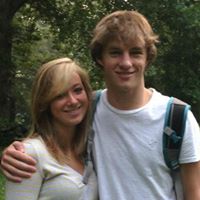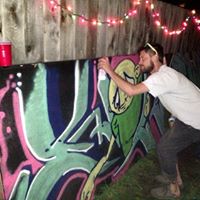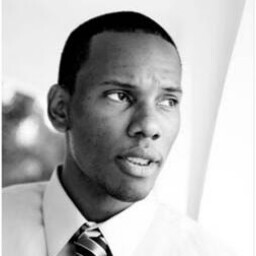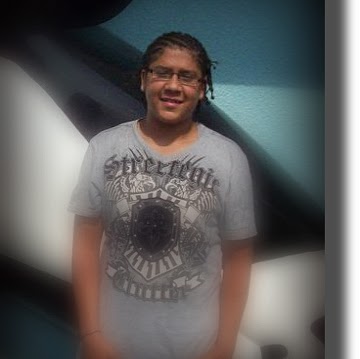Jonathan P Walker
age ~38
from Asheville, NC
Jonathan Walker Phones & Addresses
- Asheville, NC
- Leicester, NC
- 2319 Oleander Dr, Wilmington, NC 28403
- Fuquay Varina, NC
- Apex, NC
Name / Title
Company / Classification
Phones & Addresses
Owner
Lincor Enterprises Ltd
Painters. Paper Hangers
Painters. Paper Hangers
9165 Shaughnessy St, Vancouver, BC V6P 6R9
6042223543, 6043227900
6042223543, 6043227900
Us Patents
-
Discrete Event Simulation With Sequential Decision Making
view source -
US Patent:20210082129, Mar 18, 2021
-
Filed:Oct 1, 2020
-
Appl. No.:17/060957
-
Inventors:- Cary NC, US
Alexander Richard Phelps - Morrisville NC, US
Davood Hajinezhad - Cary NC, US
Bahar Biller - Chapel Hill NC, US
Jonathan Lee Walker - Raleigh NC, US
Hamza Mustafa Ghadyali - Apex NC, US
Kedar Shriram Prabhudesai - Morrisville NC, US
Xunlei Wu - Cary NC, US
Xingqi Du - Cary NC, US
Jorge Manuel Gomes da Silva - Durham NC, US
Varunraj Valsaraj - Cary NC, US
Jinxin Yi - Cary NC, US -
International Classification:G06T 7/292
G06T 7/00
G06T 7/246
G06F 11/20
G06T 11/60 -
Abstract:A computing system receives historical data. The historical data comprises physical actions taken in an experiment in a physical environment. The experiment comprises user-defined stages. The historical data comprises a recorded outcome, according to user-defined performance indicator(s) related to the user-defined stages, for each physical action taken in the experiment. The system generates, by a discrete event simulator, a computing representation of a simulated environment of the physical environment. The simulated environment comprises processing stages. The system obtains simulation data. The simulation data comprises simulated actions taken by the discrete event simulator. The simulation data comprises a predicted outcome, according to user-defined performance indicator(s) related to the processing stages, for each simulated action taken by the discrete event simulator. The system validates accuracy of the discrete event simulator at predicting the recorded outcome in the experiment. The system trains a computing agent according to a sequential decision-making algorithm.
-
Real-Time Concealed Object Tracking
view source -
US Patent:20210035313, Feb 4, 2021
-
Filed:Oct 1, 2020
-
Appl. No.:17/060504
-
Inventors:- Cary NC, US
Kedar Shriram Prabhudesai - Morrisville NC, US
Jonathan Lee Walker - Raleigh NC, US
Xunlei Wu - Cary NC, US
Xingqi Du - Cary NC, US
Bahar Biller - Chapel Hill NC, US
Mohammadreza Nazari - Champaign IL, US
Alexander Richard Phelps - Morrisville NC, US
Davood Hajinezhad - Cary NC, US
Varunraj Valsaraj - Cary NC, US
Jorge Manuel Gomes da Silva - Durham NC, US
Jinxin Yi - Cary NC, US -
International Classification:G06T 7/292
G06T 7/00
G06T 11/60
G06T 7/246
G06F 11/20 -
Abstract:A computing system responsive to obtaining original image data, detects a set of data point(s), in the original image data, that indicates an object. The system determines, based on the set of data point(s), a set of pixels associated with the object in the original image data. The system generates an alternative visual identifier for the object that provides a unique identifier for the set of pixels absent in the original image data. The system generates, autonomously from intervention by any user of the computing system, pixel information to conceal feature(s) of the object. The system obtains modified image data comprising the alternative visual identifier. The modified image data further comprises the feature(s) of the object in the original image data visually concealed in the modified image data according to the pixel information. The system outputs an image representation of a trajectory of the object through the modified image data.
-
Real-Time Spatial And Group Monitoring And Optimization
view source -
US Patent:20210019528, Jan 21, 2021
-
Filed:Oct 1, 2020
-
Appl. No.:17/060260
-
Inventors:- Cary NC, US
Kedar Shriram Prabhudesai - Morrisville NC, US
Mohammadreza Nazari - Champaign IL, US
Bahar Biller - Chapel Hill NC, US
Alexander Richard Phelps - Morrisville NC, US
Jonathan Lee Walker - Raleigh NC, US
Xunlei Wu - Cary NC, US
Xingqi Du - Cary NC, US
Davood Hajinezhad - Cary NC, US
Varunraj Valsaraj - Cary NC, US
Jorge Manuel Gomes da Silva - Durham NC, US
Jinxin Yi - Cary NC, US -
International Classification:G06K 9/00
G05B 13/04
G06K 9/32 -
Abstract:A computing system obtains image data representing images. Each of the images is captured at different time points of a physical environment. The physical environment comprises a first object and a second object. The computing system executes a control system to augment the physical environment. The control system detects a group forming in the images. The control system tracks an aspect of a movement, of a given object, in the group. The control system simulates the physical environment and the movement, of the given object, in the group in a simulated environment. The control system evaluates simulated actions in the simulated environment for a predefined objective for the physical environment. The predefined objective is related to an interaction between objects in the group. The control system generates based on evaluated simulated actions and autonomously from involvement by any user of the control system, an indication to augment the physical environment.

Jonathan PianoMan Walker
view source
Jonathan Spencer Walker
view source
Jonathan Jwalksalot Walker
view source
Jonathan William Walker
view source
Jonathan KingSnoopy Walker
view source
Jonathan DoYathang Walker
view source
Jonathan Charles Walker
view source
Jonathan Babiboi Walker
view sourceYoutube
Googleplus

Jonathan Walker
Work:
Shorts
Nortel
Flextronics
Mformation (2009-2011)
Openwave - Engineering project manager (2011)
Nortel
Flextronics
Mformation (2009-2011)
Openwave - Engineering project manager (2011)
Education:
Friends School Lisburn, University of Ulster - Bsc hons Electronics

Jonathan Walker
Work:
WakeUpNow - WakeUpNow Sponsor (2013)
LiveOps - Adult Caller (2011)
LiveOps - Adult Caller (2011)
Education:
Jeffersontown High School - Computers, Business, Kentucky State University - Computers, Business

Jonathan Walker
Work:
Birmingham Post & Mail - Political Editor (2001)
Education:
University of Exeter - Politics
About:
Political Editor, Birmingham Post & Mail
Tagline:
Political Editor of the Birmingham Post & Mail

Jonathan Walker
Education:
Cardiff University - Chemistry, Cardiff University - PhD, Glan Afan

Jonathan Walker
Work:
Nowhere Records - None
Education:
Monticello high school - Music
Relationship:
Single
Bragging Rights:
Talented song writer and cool kid

Jonathan Walker
Work:
County of San Bernardino - Automated Systems Technician
Education:
California Baptist University - Public Administration
Bragging Rights:
My creator gave me another day

Jonathan Walker
Education:
University of Exeter - Geography, Hills Road Sixth Form College
Relationship:
In_a_relationship

Jonathan Walker
Work:
NASA - Owner
Education:
Howard University
Flickr
Get Report for Jonathan P Walker from Asheville, NC, age ~38













